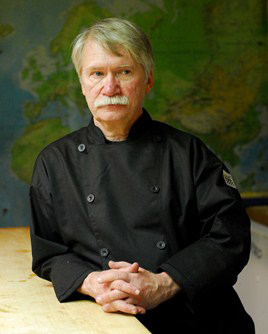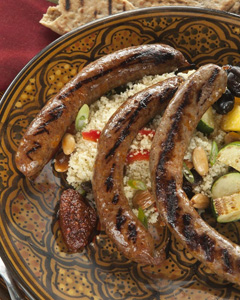Think Tank: YES, CHEF!
Saturday, 01 February 2014 03:00
 Are you preparing students to be kitchen and career ready?
Are you preparing students to be kitchen and career ready?
By Paul Sorgule, MS, AAC
Sometimes the military gets it right. The training program that all soldiers must go through is designed to not just prepare individuals physically for the demands of this type of service, but more importantly prepare these same individuals to function as members of a larger entity. The methodologies used are very well thought out, and all conditioning is directly or indirectly focused on a high level of preparedness. Some may call this conditioning excessive, but I think most would agree that the result is a unit of men or women with a common focus and a total commitment to their respective tasks as part of a team.
Apply those same realities to the function of a professional kitchen, and it would not be a stretch to admit that this type of outcome is exactly what is needed from culinary educational programs. The desired outcomes for both the military and programs focused on careers in a kitchen are: respect, attention to detail, professionalism, image, repetition, physical conditioning, teamwork, respect for chain of command, the ability to follow directives, and accepting roles within an organization.

 Approved by the ACF for CEHs, this curriculum released in January arrives at a time when mango consumption in the United States is up considerably.
Approved by the ACF for CEHs, this curriculum released in January arrives at a time when mango consumption in the United States is up considerably. The Kendall College School of Culinary Arts and the Center for the Advancement of Foodservice Education (CAFÉ) are accepting applications for the 2014 CAFÉ/Kendall College Green Award. This is the first national award to recognize secondary and postsecondary culinary-arts and baking/pastry programs for their commitment to teaching and practicing sustainability. Additionally, the winning program will receive a $1,000 cash prize plus complimentary registration to the 10th-Annual CAFÉ Leadership Conference, June 19-21, 2014, in Salt Lake City, where the award will be presented.
The Kendall College School of Culinary Arts and the Center for the Advancement of Foodservice Education (CAFÉ) are accepting applications for the 2014 CAFÉ/Kendall College Green Award. This is the first national award to recognize secondary and postsecondary culinary-arts and baking/pastry programs for their commitment to teaching and practicing sustainability. Additionally, the winning program will receive a $1,000 cash prize plus complimentary registration to the 10th-Annual CAFÉ Leadership Conference, June 19-21, 2014, in Salt Lake City, where the award will be presented. Among many professional-development events held last year, the sum of different voices, perspectives and expertise areas was the most valuable take-away.
Among many professional-development events held last year, the sum of different voices, perspectives and expertise areas was the most valuable take-away. A roundup of predictions for this year from the most respected sources.
A roundup of predictions for this year from the most respected sources.